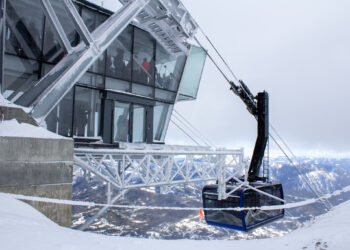By Patrick Straub EBS Fishing Columnist
We’re in high summer here in Big Sky country—PBR wrapped up last week, Yellowstone National Park visits have hit yearly peaks, and anglers are often more common than caddis hatches on our local rivers and streams. Fortunately, our streamflows are hovering near long-term averages and each day further into August means longer nights, which can translate to cooler water temperatures.
The majority of river-dwelling insects have hatched, but we now enter the season of terrestrials, insects that live on land but may find themselves on a trout stream. Grashoppers, ants, beetles and crickets are the most common landlubbers opportunistic trout may eat. But a local moth—yes, a moth—excites local anglers the most and helps us make it through these dog days of late summer.
The spruce moth (Choristoneura occidentalis) is technically the Western spruce budworm and if you love trees, you may dislike the spruce budworm. But if you love fly fishing and catching fish on dry flies when few others are, the spruce moth may be your new favorite hatch. A spruce moth is parasitic to pine trees but once on the water, it’s a delicacy to our wild trout. Here’s some help to better understand and enjoy this unique hatch.
Time it right. If you’re tired of waking up early to get to the best fishing before the bite wanes, the spruce moth hatch may be for you. The moths begin flying three to four hours after sunrise. Once the sun rises and warms the cool mountain air, action can be hot and heavy for a few hours. As the heat of the day is felt in the early afternoon, the moths seek the shade and cooler refuge of pine trees.
Adjust size and shape throughout the hatch. Most spruce moths on the Gallatin River are size 14 and 16, with a few larger insects in the size 12 range. Early in the hatch, trout will feed voraciously, giving little care to color or profile. But as the hours tick by and water temperatures rise, trout may become more selective and color and profile selection requires more attention. Moth patterns with a larger wing and hefty profile such as a Bloom’s Spruce will keep your success going.
Learn a reach cast. If you’ve read my column before, you’ve heard me say this many times. A reach cast is an essential tool to get a longer and more natural drift. Since spruce moths are land-dwelling insects that are found a-stream, you can expect bank-side structure to be a featured element of their hatch. And if you need to avoid structure while also achieving a long, drag-free drift, a reach cast will help. Learn it. Practice it. Catch more fish.
Tackle your tippet and floatant selection. Fish 4X and 5X tippets on 9-foot leaders. Rip SuppleFlex and TroutHunter Finesse are ideal for this hatch. A potent liquid floatant such as Hi-and-Dri, Shimazaki or Fly Agra is essential. Top it off and ensure your fly floats by using a drying powder such as Loon’s Top Ride or Blue Ribbon.
Location, location, location. Spruce moths hatch near trees. They are pine tree budworm. Trout like to rise to them. Trout are not fans of bright sunshine. Connect the dots and focus on feeding areas that are near trees, in shallow water and provide shade cover. Shallow water is water less than 6 feet deep but deeper than 1 foot.
Keep a tight lip. Salmon flies are the sexy hatch everyone talks about. Pale Morning Dun, or PMD, hatches are technical and tempt experienced anglers to enter geek-out mode. Hoppers are easy: Put a boat in the water, tie on some 2X and fish it down the middle.
Yet the aura around the spruce moth hatch is still understated; and arguably, a little misunderstood. It’s OK to keep it that way. Many of us fishing today who learned how to do it years ago did not have Facebook or Instagram to give away all the secrets. We had to do it the hard way: by actually going out and doing it.
Spruce moths, albeit a nuisance to pine trees and forest managers, are a welcome respite to hungry trout during an otherwise scrawny feeding period. As anglers, we’re thankful our trout throw caution to the wind during these hot and dry months—we just need to be cool, calm and collected to keep its appeal understated.
“A trout will eat a moth?” Sure. I guess so.
Pat Straub is the author of six books, including “The Frugal Fly Fisher,” “Montana On The Fly” and “Everything You Always Wanted to Know About Fly Fishing.” He and his wife own Gallatin River Guides in Big Sky. He also co-owns Montana Fishing Outfitters and the Montana Fishing Guide School.














